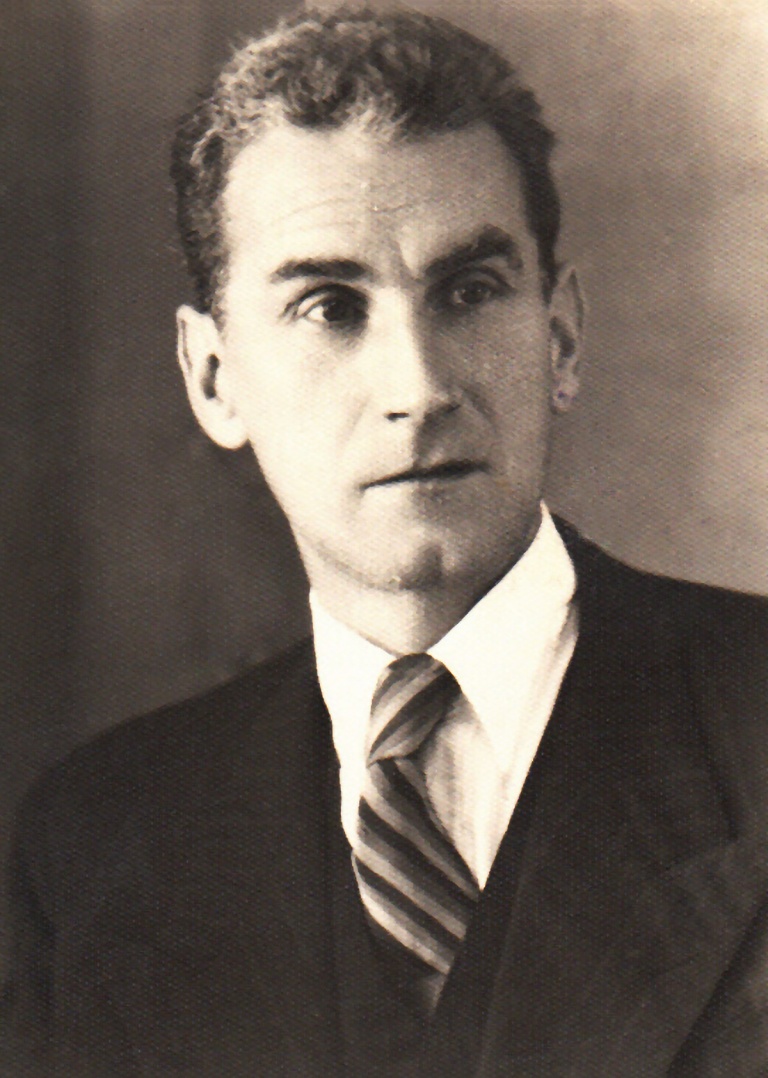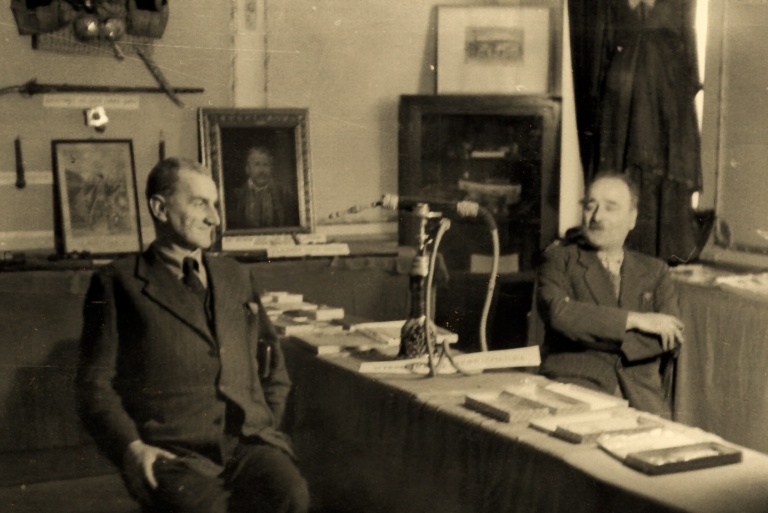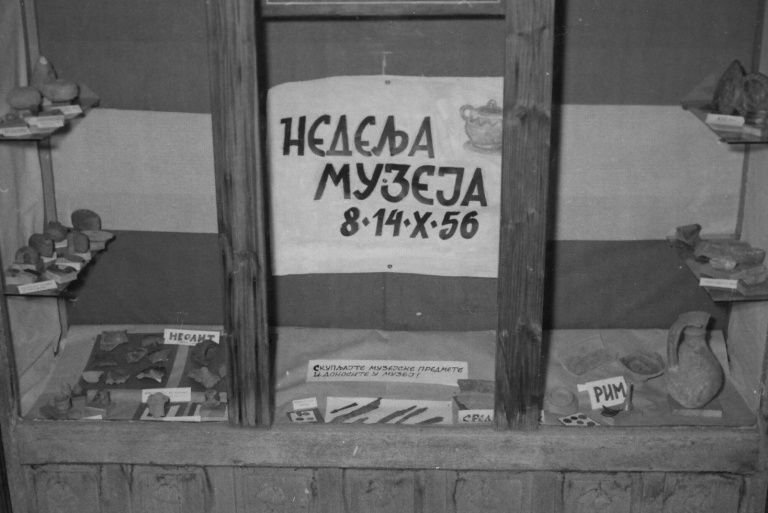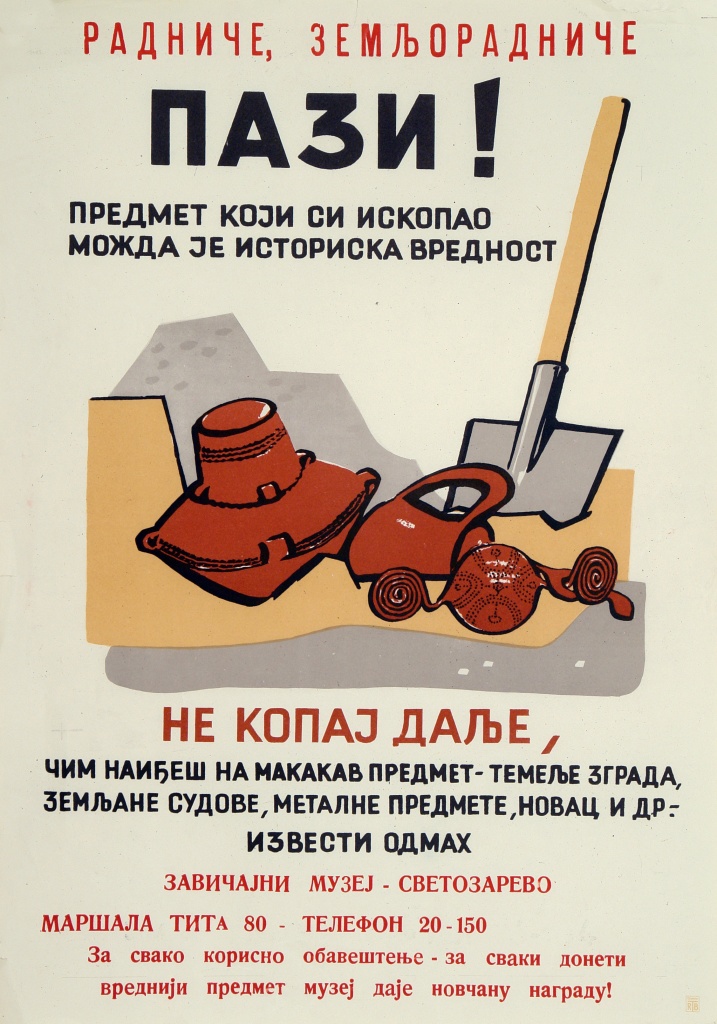The Regional Museum Jagodina is a complex-type museum with territorial jurisdiction for the city of Jagodina and municipalities of Despotovac, Paraćin, Rekovac, Svilajnac, and Ćuprija as per the Ministry of Culture decision from 2021. Its collection includes over 10,000 objects, created in the period from prehistory to modern times, classified in fifty collections of the Departments of Natural History, Archaeology, Ethnology, History, and Arts. The Museum also has five supporting services: Educational and Pedagogical Work Office, Design and Communication Office, Documentation Office with the Photo Department and the Library, Conservation and Restoration Office, Legal and Administrative Office, and Support and Technical Affairs Office.
The first attempts to commence museum activities in Pomoravlje were recorded in 1949, when the Council of the Museum Center for the towns of Svetozarevo and Paraćin and the counties of Belica, Despotovac, Resava, Ravanica and Paraćin was formed in Svetozarevo, today’s Jagodina. A few years later, an initiative was launched to establish a city museum that would be part of the Archives, which was officially completed on September 30, 1954. The decision was then made to appoint Dušan Vukićević as the manager of the City State Archives and the future Museum. Today, this date is the official Day of the Regional Museum Jagodina.
Dušan Vukićević (1897–1969) is a significant figure in education and culture whose hard work, enthusiasm, and perseverance laid the foundations of museum activity in Jagodina. The collection of antiquities he collected for years at the Teachers’ School, composed of natural, archaeological, and historical objects, became the core around which the museum collection began to be formed. Dušan Vukićević was born in Jagodina. He studied at the Faculty of Philosophy in Belgrade within the history and comparative literature program. He taught in Ćuprija, Jagodina and Surdulica. As the first Regional Museum manager, with his efforts and constant attempts to affirm museum activities, Vukićević popularized the Museum as a cultural institution, museology as a humanistic discipline, and insisted on the need to preserve cultural heritage. In honor of Dušan Vukićević, the museum was named after him in 1973. In 1984, on the occasion of the celebration of the Regional Museum’s thirtieth anniversary, a memorial plaque, the work of prominent sculptor Aleksandar Zarin, was placed in the institution’s hall.
The initial years of the Museum were challenging. Public affirmation of museum activity was slow, and awareness of the need to preserve heritage was underdeveloped. The major problem was to find an adequate space and good working conditions. After the decision to establish the museum was made, an action was launched to collect museum objects, which was accepted by the local population. Along with privately owned, the collected objects were first presented to the public at the exhibition on the occasion of “Museum Week,” held from October 3 to 10, 1954. Natural, archaeological, ethnographic, and historical material was exhibited. The exhibition was very well attended and was rated by experts as one of the most successful in the country.
The Museum and the City State Archives operated jointly until September 1955. The museum objects, collected by the museum as part of the Archives through gifts and repurchases, were then handed over. The museum received special departments within the City State Archives. The number of objects in the collection had increased over time, and exhibitions were held to present the collected material.
After Dušan Vukićević retired in 1961, the Museum work was temporarily suspended. With the appointment of a new manager, archaeologist Sava Vetnić in 1963, the Museum was revived and formed as a complex institution that worked on the systematic collection, preservation, exhibition, and publication of natural, archaeological, ethnological, historical, and artistic materials. In the next two decades, Savo Vetnić managed to turn a small museum institution with a few employees into a central protection service of Pomoravlje composed of several departments, with a strong emphasis on archaeological research. During the 1960s, the Art Department was formed and started working more actively on collecting works by local artists and organizing art exhibitions.
In the 1970s and 1980s, the Regional Museum work organization still relied on the initial concept, which saw the institution as a complex service for the protection of cultural goods with an emphasis on urban, local, and regional levels. After many relocations, the Museum finally got the former Sokol House building and occupied it in 1981. Apart from the museum building at 82 Kneginje Milice Street, the Regional Museum has the right to use the plots on the Jerinin grad archaeological site in Staro selo and the plots around the old Kočin hrast in Kočino selo owned by the City of Jagodina. The Regional Museum recorded particular affirmation of its exhibition, educational and scientific activity in the late eighties and early nineties when the number of professional staff increased.
Since the founding of the museum, great attention has been paid to fieldwork. Both independently and in cooperation with other protection institutions (National Museum in Belgrade, Republic Institute for the Protection of Cultural Monuments in Belgrade, and Institute for the Protection of Cultural Monuments in Kragujevac) or scientific institutions (Faculty of Philosophy in Belgrade, Archaeological Institute Belgrade), the Regional Museum organized or participated in about fifty smaller or larger scale archaeological excavations, the most important of which were part of long-term research projects. Continuous fieldwork has been carried out by other departments of the Museum as well.
The museum also has a continuous exhibition and publishing activity. Besides collecting, processing, and presenting materials, the Museum has been paying great attention to pedagogical and marketing activities since its establishment. The volume of collected material, its importance, and results of professional and scientific research into the history and culture of the city and Central Pomoravlje make the Regional Museum a significant cultural institution of Serbia.






